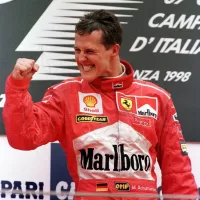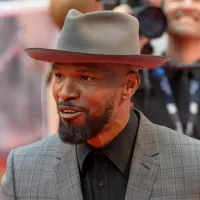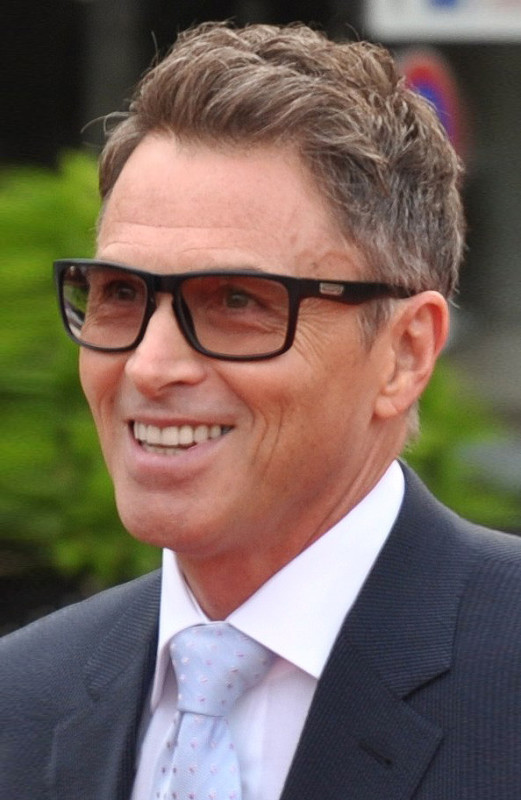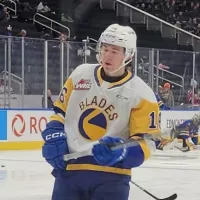The Canadian Grand Prix, an annual motor racing event, has been held since 1961 and has been a part of the Formula One World Championship since 1967. Initially a sports car event at Mosport Park in Ontario, it later alternated between Mosport and Circuit Mont-Tremblant in Quebec. Safety concerns led to a permanent move to Mosport after 1971. In 1978, due to similar concerns, the Grand Prix relocated to its current location at Circuit Gilles Villeneuve on Notre Dame Island in Montreal, Quebec.
1950: American Indianapolis 500 formed part of the FIA World Drivers' Championship from 1950
The American Indianapolis 500 formed part of the FIA World Drivers' Championship from 1950 to 1960.
1958: No Formula One race held in North America since 1958
There was no Formula One race held in North America for the first time since 1958.
1960: American Indianapolis 500 formed part of the FIA World Drivers' Championship until 1960
The American Indianapolis 500 formed part of the FIA World Drivers' Championship until 1960.
1961: First Staged at Mosport Park
In 1961, the Canadian Grand Prix was first staged at Mosport Park in Bowmanville, Ontario, as a sports car event.
1961: Premier event of the Canadian Sports Car Championship
In 1961, the Canadian Grand Prix was one of the premier events of the new Canadian Sports Car Championship at Mosport Park near Toronto.
1966: Canadian-American Challenge Cup
In 1966, the Canadian-American Challenge Cup ran the event, with American Mark Donohue winning.
1967: Formula One World Championship Event at Mosport Park
In 1967, the Canadian Grand Prix was run as part of the Formula One World Championship for the first time, with Mosport Park selected as the venue.
1967: Formula One World Championship
Since 1967, the Canadian Grand Prix has been part of the Formula One World Championship.
1968: Proposal to move Grand Prix to Toronto
Following the 1968 season, a proposal was developed to move both the Grand Prix and Mosport's Telegram Trophy IndyCar race to a new street circuit in Toronto along Lake Shore Boulevard and through Exhibition Place, with the start/finish line and pits to be located inside Exhibition Stadium. However, the idea was eventually dropped.
1968: McLaren Team Finishes 1-2
In 1968, Chris Amon led the Canadian Grand Prix until his gearbox broke, resulting in a 1–2 finish for the McLaren team, with Denny Hulme and Bruce McLaren taking top honours.
1968: Canadian Grand Prix held at Circuit Mont-Tremblant
In 1968, the Canadian Grand Prix was held at Circuit Mont-Tremblant in Quebec.
1969: Jacky Ickx wins the race
At the 1969 event at Mosport Park, Jacky Ickx won the race after a collision with Jackie Stewart who complained to the organizers about Al Pease, who was then given the black disqualification flag after completing less than half the number of laps the leaders had completed in an almost embarrassingly outdated Eagle-Climax, and became the only driver in F1 history ever to be disqualified for being too slow.
1970: Canadian Grand Prix held at Circuit Mont-Tremblant
In 1970, the Canadian Grand Prix was held at Circuit Mont-Tremblant in Quebec.
1970: Ickx wins again
The 1970 Canadian Grand Prix event saw Ickx win again with his Swiss teammate Clay Regazzoni making the result a Ferrari 1–2.
1971: Grand Prix Moves Permanently to Mosport
After 1971, safety concerns led to the Grand Prix moving permanently to Mosport.
1971: Mosport solely continued to hold the Canadian Grand Prix
Mosport solely continued to hold the Canadian Grand Prix from 1971.
1971: Jackie Stewart Takes Victory in Rain-Soaked Race
The 1971 Canadian Grand Prix event at Mosport Park was rain-soaked and delayed after a fatal accident in a support race, with Jackie Stewart taking victory in a Tyrrell.
1972: Stewart Wins Again
In 1972, Mosport was upgraded with new safety features, and Jackie Stewart won the Canadian Grand Prix again.
1972: Safety concerns at Mont-Tremblant
The Mont-Tremblant circuit was not used again for Formula One because of safety concerns regarding the bitter winters seriously affecting the track surface and a dispute with the local racing authorities there in 1972.
1973: Confusion Reigns After Rain-Soaked Event
The 1973 Canadian Grand Prix was another rain-soaked event, with confusion reigning after a bungled pace car interlude. Peter Revson was eventually confirmed as the winner.
1974: Fittipaldi Wins Amidst Championship Rivalry
In 1974, Fittipaldi won the Canadian Grand Prix, while championship rivals Clay Regazzoni finished 2nd and Jody Scheckter crashed heavily.
1975: No event in 1975
There was no Canadian Grand Prix event in 1975.
1976: Hunt Wins Canadian Grand Prix
In 1976, James Hunt won the Canadian Grand Prix event, driving furiously throughout the race, after finding out his 9 points from Brands Hatch were taken away.
1977: Villeneuve's Debut and Safety Concerns at Mosport
In 1977, Gilles Villeneuve made his debut for Ferrari at the Canadian Grand Prix, but concerns about Mosport Park's safety arose after Ian Ashley's accident. Jody Scheckter won the race.
1978: Canadian Grand Prix Moves to Circuit Gilles Villeneuve
In 1978, the Canadian Grand Prix moved to its current home at Circuit Gilles Villeneuve in Montreal, Quebec, due to similar safety concerns with Mosport.
1978: First Canadian Grand Prix at Circuit Île Notre Dame
In 1978, the Canadian Grand Prix was first held at Circuit Île Notre Dame in Montreal, which had been the site of Expo '67, and has been held there ever since, with the exception of four years when the event was cancelled.
1979: Circuit Layout Modifications
In 1979, circuit layout modifications were made to make it faster, and Australian Alan Jones won the Canadian Grand Prix.
1980: Jones wins 1980 race
In 1980 Alan Jones won the Canadian Grand Prix and the Driver's Championship that year. 1980 also saw a big startline pile-up and Jean-Pierre Jabouille's F1 racing career came to an end when he crashed his Renault.
1981: Laffite's Last Victory
The 1981 Canadian Grand Prix was a rain-soaked event in which Jacques Laffite took what was to be his last F1 victory. Villeneuve demonstrated car control after a crash, finishing third with his front wing askew.
1982: Race Renamed and Tragic Accident
In 1982, following the death of Gilles Villeneuve, the race course in Montreal was renamed Circuit Gilles Villeneuve. The 1982 Canadian Grand Prix also saw a fatal accident involving Riccardo Paletti, who crashed into Didier Pironi's stalled Ferrari. Nelson Piquet won the race, and the race was moved to June.
1983: Arnoux's First Win as a Ferrari Driver
In 1983, René Arnoux secured his first race win as a Ferrari driver at the Canadian Grand Prix.
1985: Ferrari Finishes 1–2
In 1985, Ferrari finished 1–2 with Michele Alboreto and Stefan Johansson taking top honours at the Canadian Grand Prix.
1986: Mansell Wins Competitive Race
1986 Canadian Grand Prix was a competitive race. Nigel Mansell eventually won after other front runners encountered problems.
1986: Molson Indy Toronto
A third attempt at a Toronto race eventually came to fruition by competing Canadian brewer Molson in 1986 as the Molson Indy Toronto, part of the Indy Car World Series
1987: Race Not Held Due to Sponsorship Dispute
The Canadian Grand Prix was not held in 1987 due to a sponsorship dispute between Labatt and Molson breweries, and the track was modified with the starting line moved.
1987: Canadian Grand Prix held since 1987
The Montreal race had been on the list since 1987 until it was dropped from the Formula 1 calendar.
1988: Derek Warwick Crash During Qualifying
Derek Warwick crashed his Arrows-Megatron during qualifying for the 1988 Canadian Grand Prix.
1988: Senna Takes Victory
In 1988, Ayrton Senna took victory in the Canadian Grand Prix driving the McLaren MP4/4 with its Honda turbo engine.
1990: Nannini Strikes a Gopher
In 1990, Alessandro Nannini struck a gopher on the track during the Canadian Grand Prix, damaging his tire.
1990: Senna Wins Rain-Soaked Event
The 1990 Canadian Grand Prix was a rain-soaked event with several accidents, and Ayrton Senna emerged as the winner.
1991: Mansell's Failure and Piquet's Victory
In 1991, Nigel Mansell's Williams failed on the last lap of the Canadian Grand Prix, allowing Nelson Piquet to take his final F1 victory in a Benetton.
1992: Wall Claimed Victims such as Derek Warwick
Before the wall was named "Wall of Champions" it also claimed victims such as 1992 World Sportscar Champion and long-time F1 driver Derek Warwick who crashed his Arrows-Megatron.
1992: Berger Wins After Mansell's Spin
Gerhard Berger won the 1992 Canadian Grand Prix after Nigel Mansell spun off following a collision with Berger's teammate Senna.
1993: Alain Prost Wins Fending Off Senna
In 1993, Alain Prost won the Canadian Grand Prix while fending off a spirited drive from Senna.
1993: Canadian Grand Prix Becomes Only North American Round
In 1993, with the demise of Grands Prix in Detroit, Phoenix and Mexico City, the Canadian Grand Prix became the only North American round.
1994: Droit du Casino Curve Modified
In response to the Imola tragedies, the very fast Droit du Casino curve was turned into a chicane during the 1994 Canadian Grand Prix. Michael Schumacher won the race.
1995: Jean Alesi Wins the Canadian Grand Prix
In 1995, Ferrari's Jean Alesi won the Canadian Grand Prix on his 31st birthday, marking the only win of his career. Alesi inherited the lead after Michael Schumacher pitted with electrical problems and Damon Hill's hydraulics failed. Schumacher gave Alesi a lift back to the pits after Alesi's car ran out of fuel.
1995: Argentine Grand Prix Returns
In 1995, The Argentine Grand Prix returned for 4 brief years.
1996: Casino Corner Removed, Damon Hill Wins
In 1996, the Casino corner was removed and the layout was changed. Briton Damon Hill won the Canadian Grand Prix.
1997: Olivier Panis Crash
The 1997 Canadian Grand Prix was stopped early due to a crash involving Olivier Panis, who was sidelined for nine races.
1998: Argentine Grand Prix existed for 4 brief years until 1998
The Argentine Grand Prix had returned for 4 brief years from 1995 to 1998.
1999: Wall of Champions
In 1999, Damon Hill, Michael Schumacher and Jacques Villeneuve all crashed into the same wall at the final chicane of the Circuit Gilles Villeneuve. The wall became known as the "Wall of Champions". Ricardo Zonta also crashed into the wall.
1999: Mika Häkkinen Wins
In 1999, Finn Mika Häkkinen won the Canadian Grand Prix.
2000: Canadian Grand Prix remains only North American Round
The Canadian Grand Prix continued to be the only round in North America up to 2000.
2001: Fatal accident involving Graham Beveridge
In 2001, Marshal Graham Beveridge died at the Australian Grand Prix.
2001: Schumacher Brothers Finish 1-2
In 2001, Ralf and Michael Schumacher achieved the first sibling 1–2 finish in Formula 1 history at the Canadian Grand Prix. Jean Alesi celebrated his fifth place by doing several donuts in his vehicle and throwing his helmet into the crowd.
2003: Schumacher Brothers Finish 1-2
The Schumacher brothers also finished 1-2 in the 2003 edition of the Canadian Grand Prix.
2004: Michael Schumacher Victory
Michael Schumacher won the Canadian Grand Prix in 2004, part of his streak of victories from 1997 to 2004 (except 1999 and 2001).
2005: Most Watched Formula One Grand Prix
In 2005, the Canadian Grand Prix was the most watched Formula One Grand Prix in the world and the third most watched sporting event worldwide.
2007: Groundhog Disrupts Practice Session
In 2007, a groundhog disrupted the practice session of Ralf Schumacher. On race day, Anthony Davidson struck a groundhog which forced him to pit and repair the damage to his front wing.
2007: Lewis Hamilton's First Win
The 2007 Canadian Grand Prix was the site of rookie Lewis Hamilton's first win. Takuma Sato overtook Fernando Alonso. The race also saw a crash involving Robert Kubica.
2007: United States Grand Prix dropped after 2007
The United States Grand Prix was dropped after 2007.
October 2008: Canadian Grand Prix Dropped From 2009 Calendar
On 7 October 2008, the Canadian Grand Prix was dropped from the 2009 Formula One calendar.
2008: Canadian Grand Prix Still Only North American Round
From 2008, after another demise of the United States Grand Prix, the Canadian Grand Prix was again the only round in North America.
2008: Groundhog Crosses the Track
In 2008, a groundhog crossed the track at the hairpin in the 2nd practice session but did not disrupt the session.
April 2009: Possible Return of Canadian Grand Prix
During the Australian Grand Prix, reports surfaced that the Canadian Grand Prix could return during the 2009 season if the race circuit in Abu Dhabi was not ready. On 26 April 2009, Speed reported Bernie Ecclestone negotiating for the return of the Canadian Grand Prix for the 2010 season, pending circuit upgrades.
August 2009: Provisional Schedule Includes Canadian and British Grand Prix
On 29 August 2009, the BBC reported the provisional schedule for the 2010 season, which had both the Canadian and British Grand Prix marked down as "provisional".
November 2009: Settlement Reached, New Five-Year Contract Signed
On 27 November 2009, Quebec's officials and Canadian Grand Prix organizers announced they had reached a settlement with Formula One Administration and signed a new five-year contract spanning the 2010–2014 seasons.
2009: No F1 Race in North America
Due to the Canadian Grand Prix being dropped from the 2009 calendar, it meant that in 2009 no Formula One race was held in North America for the first time since 1958.
2009: Wall of Champions
In recent years, Jenson Button, 2009 Formula One World Champion, also fell victim to the Wall of Champions.
June 2010: Canadian Grand Prix Run on June 13
The 2010 Canadian Grand Prix was eventually run in Montreal on 13 June 2010.
2010: Possible return of Canadian Grand Prix in 2010
Bernie Ecclestone was negotiating a return of the Canadian Grand Prix for the 2010 season, provided upgrades to the circuit were completed.
2011: Sebastian Vettel Crashes into the Wall
During Friday practice in 2011, Sebastian Vettel crashed into the Wall of Champions.
2011: Button Wins Longest F1 Race
The 2011 Canadian Grand Prix became the longest Formula One race ever. Jenson Button stormed through the field from last place to win after a restart, forcing Sebastian Vettel into a mistake.
2011: Canadian Grand Prix Remains Only North American Round
The Canadian Grand Prix remained the only round in North America until 2011.
2013: Fatal Accident Involving Track Marshal
The 2013 Canadian Grand Prix saw Vettel dominate, but it also saw the first Formula One-related fatality in 12 years. Thirty-eight-year-old track marshal Mark Robinson was run over by a recovery vehicle while removing Esteban Gutiérrez's Sauber. Robinson died later in hospital.
2014: Five-year contract spanning the 2010–2014 seasons
A new five-year contract signed in 2009 was for the seasons 2010-2014.
2018: Grosjean Strikes a Groundhog
In 2018, Romain Grosjean struck a groundhog in the 2nd practice session on the approach to turn 13, damaging his front wing.
2019: Kevin Magnussen Crashes into the Wall
During Q2 in 2019, Kevin Magnussen crashed into the Wall of Champions, escaping serious injury.
2020: Cancellation of the 2020 event
The 2020 Canadian Grand Prix event was cancelled due to the COVID-19 pandemic.
2021: Cancellation of the 2021 event
The 2021 Canadian Grand Prix event was cancelled due to the COVID-19 pandemic, after which the contract was extended to 2031.
2022: Latifi Hits a Groundhog
In 2022, Nicholas Latifi hit a groundhog in third practice in the braking zone of turn 8.
2022: Return to Calendar
The Canadian Grand Prix returned to the calendar in the 2022 season.
Mentioned in this timeline

Michael Schumacher is a retired German Formula One racing driver...

Lewis Hamilton is a British Formula One racing driver currently...

News encompasses information about current events disseminated through various media...

Abu Dhabi is the capital city of the United Arab...
Monaco officially the Principality of Monaco is a sovereign city-state...

A car also known as an automobile is a wheeled...
Trending

9 months ago Jamie Foxx at 'Number One on the Call Sheet' premiere, addresses DEI rhetoric.

5 months ago Téa Leoni and Tim Daly Get Married After Years Together: Intimate Wedding

7 days ago Dick Vitale and Charles Barkley Team Up for College Basketball Broadcasts This Season
4 days ago Mortgage Rates Fall: Refinance Opportunities and Lender Options Emerge in December 2025
14 days ago Matt Rogers' brief moment: Comedian strips down, ignites wild reactions, fans are feral.

Fraser Minten is a Canadian professional ice hockey centre currently playing for the Boston Bruins in the NHL He was...
Popular
Matt and Ross Duffer known as the Duffer Brothers are...

Candace Owens is an American conservative political commentator and author...

Ilhan Omar is an American politician currently serving as the...

XXXTentacion born Jahseh Dwayne Ricardo Onfroy was a controversial yet...

Tom Cotton is an American politician and Army veteran currently...

Harriet Tubman was a pivotal American abolitionist and social activist...